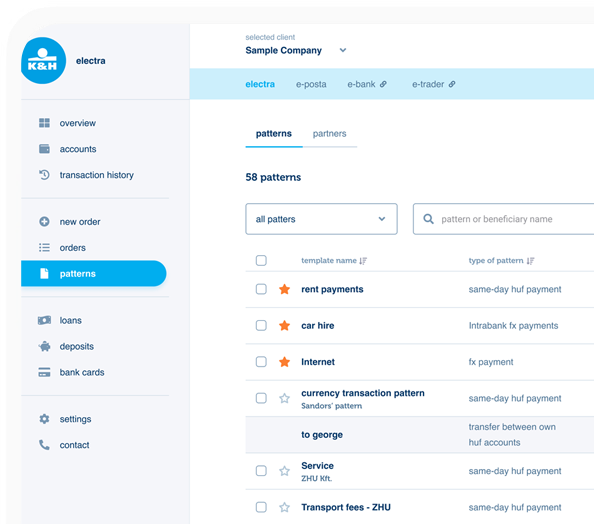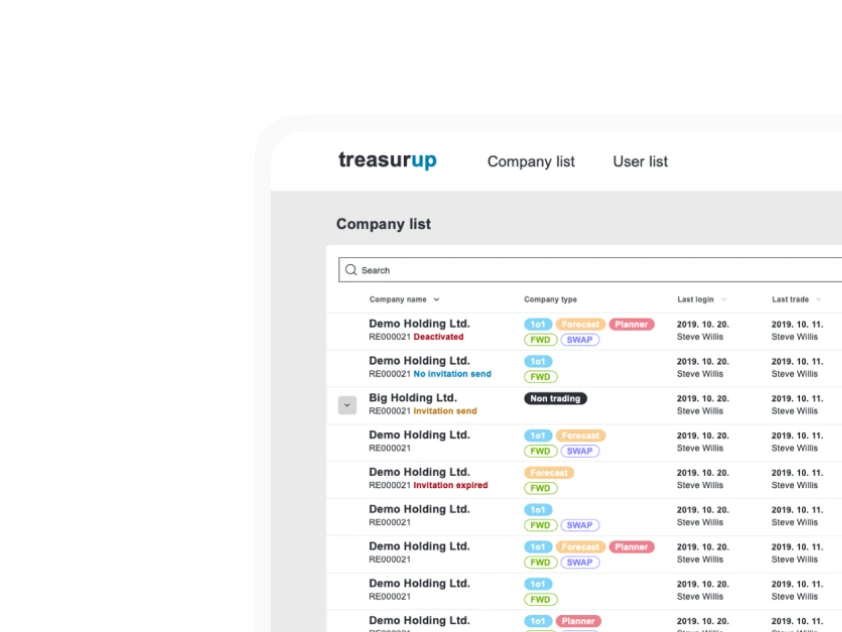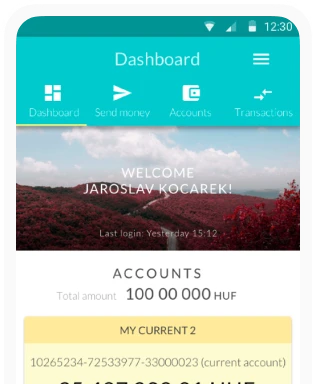Nepal – Stunning Beauty and Fintech Potential
Nepal is a country of ancient history, but the modern state only dates back to 2008 when the federal republic was created, and after ten years of instability, the establishment of the modern democratic republic in 2015. So just as the new country was making its mark on the world stage, Fintech was also gaining significant traction. With a total population of some 26 million, agriculture remains the most important industry, along with tourism, which accounted for almost 8% of GDP in 2018. The country has few mineral and natural resources and relies almost entirely on energy imports. It’s also one of the world’s least urbanized countries.
Building Nepal’s new Mount Everest: a Fintech and digital economy story
Sanjib Subba is not a man for small ambitions. For a start he’s set his sights on a new Mount Everest – the world’s highest mountain – in his homeland of Nepal. He’s already trekked to the actual physical Everest basecamp at 5,200 metres, but for the new Mount Everest, Nepal has quietly reached a significant milestone, crossing US $515 million in IT and software exports, building a ‘basecamp’ for the country’s digital economy and demonstrating how the country is leveraging its young tech talent.
Sanjib adds that the potential is to grow exports 15–20 times in the years ahead and that the journey will be defined by how Nepal channels the emerging Fintech ecosystem to create jobs, drive financial inclusion, and position itself as a serious global player in the digital economy. “The kids in Kathmandu speak the same language as the kids in Silicon Valley, as the kids in Frankfurt, as the kids in London. There is no language barrier, they speak one language: C++, or Python.”
Sanjib is an enthusiast for what he describes as ‘the beauty of technology’ and its borderlessness that doesn’t require a cargo truck to deliver product. “You and I are talking right now,” he says. “And we didn't go to the Ministry of Home Affairs to get permission. This is the borderless economy that my country is profiting from.”
 Sanjib Subba
Sanjib SubbaBurning energy
After decades in banking across Nepal and Southeast Asia, Sanjib transitioned to ecosystem building, driven by a desire to contribute beyond personal milestones. In 2023, he founded Fintech Alliance Nepal to foster collaboration and learning within the expanding Fintech community, and has since shifted focus to catalyze action over administration. Having also been a founder of the Nepal AI Association and the HR Society (with a Blockchain Association in the works), Sanjib excuses himself from the more mundane day-to-day tasks by saying, “I have all this crazy energy that needs to be burned somewhere!”
K for knowledge
Fortunately much of that energy is currently being directed into his own ‘bread and butter’ enterprise, Kathmandu FinteK. The ‘K’ signifies Knowledge, with Sanjib and his small team designing Fintech learning programs and hosting knowledge-sharing platforms like the Nepal Fintech Festival. In 2025 the inaugural festival attracted significant local and regional participation, underlining Nepal’s rising prominence in Fintech, with 397 attendees, mostly from Nepal but with some delegates and speakers from India. The festival was well received, and sponsored by the world’s largest card network, UnionPay.
Any noticeable trends at the conference? “The Fintech world has become glamorized because of the payment aspect attached to it,” Sanjib reflects. “But Fintech is not just about payment.” He mentions how QR codes have taken off since 2021 in Nepalese payment systems, and wallets such as eSewa and Khalti have expanded use across urban and rural areas. As a result around 25% of payments are now made digitally. Fintech in Nepal is more than payment apps however, and a digitally inclusive economy is being built, working in sync with the banking sector. This sector remains the backbone due to regulatory and financial system requirements. Sanjib notes, “Without the banks and financial industry at the core of it, Fintech cannot move. It can’t move because there are regulatory requirements.” Wallets are licensed by the Nepal Rastra Central Bank, which has taken a proactive role, advancing digital payments while maintaining system stability.
 Kathmandu Fintech
Kathmandu FintechPayment systems are important
So with this as basic background, let’s meet Dr. Sarika Amatya, Ph.D, Finance and Administrative Director for FHI 360 Nepal, ‘a nonprofit organization that mobilizes research, resources and relationships so that people everywhere can access the opportunities they need to lead full, healthy lives.’ She notes that Nepalese people are working all over the world, and especially in surrounding countries, so there is relatively good awareness of payment systems used for sending money back to relatives. Internet coverage is generally good, and mobile use is widespread, with Sarika pointing out that her parents and grandparents are now pretty tech savvy. In her work Sarika has visited most of the districts of the country, so her observations of financial and digital literacy record an increasing and well-founded trend across urban areas and districts of Nepal. Cash is still widely used but the Nepalese government is keen to push cashless transactions, and QR codes and cardless withdrawals have made inroads in urban areas. Digital payment of utilities bills is growing, along with remittances, and loans are increasingly managed digitally.
 Dr. Sarika Amaty
Dr. Sarika Amaty‘Shaping the future of digital Nepal’
So Fintech was arriving in Nepal as the country was established in its modern form, and has grown rapidly since, especially once the National Payment system was created in 2014. The Nepal Rastra Bank, along with the International Finance Corporation, is focusing on developing a secure and efficient digital infrastructure and has been instrumental in facilitating and strengthening the Fintech ecosystem, especially post-pandemic. There are around 135 Fintechs in Nepal, many of which are in the payments area, along with IT infrastructure companies. However, Sarika points out that only around 25 are ‘working effectively’. Of these, eSewa provided Nepal’s first digital wallet, enabling mobile top-ups, and payment of utilities bills, entertainment, bus ticket purchase and much more. It’s even possible to use the eSewa app to vote for cultural events such as singing competitions and the TV show Nepal Idol.
Fonepay innovated with QR interoperability and is ‘shaping the future of digital Nepal’ with the promise of ‘seamless payments anytime, anywhere.’ Another digital wallet and payment gateway that Sarika draws attention to is Khalti, which as well as being a mobile service has more than 100,000 Point of Sale and Agent Network outlets for end users.
These companies, and other successful Fintechs are playing an important part in the radical changes underpinning Nepalese society in only a few short years.
Keeping things running smoothly
While generally the communications infrastructure for financial services holds up, Sarika says that occasionally there are struggles to keep everything running smoothly. One example is when nationwide celebrations occur, such as the Dashain and Indra Jatra festivals especially in September and October, when payment channels can get a little strained. The population’s fixation on the exploits of the Nepal National Cricket Team can also result in slower internet and mobile networks when there are matches being played. Nevertheless Sarika reckons that Nepal’s internet infrastructure is close to as effective as neighboring India and China, with around ten major Internet Service Providers, led by WorldLink, Vianet, and Subisu.
One key Fintech player doing appreciable work is Nepal Clearing House Limited (NCHL), which is actively working on the National Payment Switch (NPS), a core infrastructure for routing and settling retail transactions, and enabling interoperability between different payment systems. This supports both card and non-card transactions under the auspices of the central Nepal Rastra Bank. Additionally, NCHL is preparing to implement Real-Time Gross Settlement (RTGS), a system designed for urgent and high-value payments, ensuring immediate fund transfers between financial institutions. Also coming online is the NepalPay Card which offers Debit, Credit, Prepaid, and Virtual cards, all processed within Nepal.
Cautious innovation: AI and blockchain
While crypto remains illegal in Nepal due to the non-convertibility of the currency and dependence on remittances, blockchain and cross-border technology use cases are on the watchlist for gradual adoption. Meanwhile, AI is finding its place in credit scoring, risk management, and customer service, though there is a collective call for regulatory preparedness and environmental consideration as its adoption scales.
Blockchain may still be on the drawing board, but AI is in the here and now, although Sanjib Subba is slightly dismissive. “ChatGPT came along, and General AI, so suddenly it’s a very agile, scalable low-hanging technology. But it’s like a toy.” Despite his misgivings, especially about the environmental impact of AI use, Sanjib recognizes that AI is becoming ever more robust, so not too surprisingly the first Nepal AI conference will be staged … by Kathmandu FinteK.
On the steady adoption of AI he cautions that the regulator and government must be prudent and have the acts and procedures in place before being swamped by AI innovation. “The future of AI sounds optimistic, but has its own cost and we don’t know yet what that is.”
 Fintech Festival ’25, Sanjib Subba centre right
Fintech Festival ’25, Sanjib Subba centre rightIn praise of the regulator
Sanjib muses on crypto not being the only benchmark of Fintech growth and success. “When you already have strong digital payments, why would you need crypto? If the use case for crypto is to pay someone else, that use case is already available through digital payment solutions. So the regulator is not banning crypto because of innovation issues. It is about the country’s resources, the balance of payments. If a Nepali citizen were to buy crypto from the international market, paying in dollars, where would they get the dollars when our currency is not convertible? So the regulator is very proactive and very positive.” He praises the previous Governor of the Central Bank for this proactive approach when he walked the streets during the pandemic, talking to market vendors about use of the then-new QR code system – something which really helped promote digital awareness.
Coding not carpets
When he was just launching his financial career, Sanjib notes that Nepal had many ‘cottage industries’ producing garments and carpets for Europe. European buyers would send designs that used Nepalese skills, but not Nepalese creativity. The same applies now, but it’s coding, not carpets. He says that if the arbitrary rate for a US coder might start at twenty dollars an hour, then the Nepalese rate will be two dollars. But to return to his theme of business without borders, it’s an economy which really is borderless. Remember that ‘K’ in Kathmandu FinteK? Those ‘kids’ whose work he champions are homegrown talents who can work for anyone, anywhere. “Digital nomads or digital-friendly people are the same everywhere,” he says. It’s back to that idea of speaking a common language beyond nationality or culture.
Inward focus of Fintechs
At present Nepalese Fintechs are mainly focused on their domestic market, but an alliance with PayPal in India is said to be developing (although at present PayPal does not support money transfers to the country, opting to use instead its subsidiary the Xoom payment service). This points to one of the issues facing Nepal’s Fintech sector – the relative lack of Foreign Direct Investment. While there is FDI in the growing tech and service sectors, only a fraction is directed towards Fintech. Currently FDI in the Fintech sector requires a minimum investment of Nepalese Rupee of NPR 20 million (approximately US $145,000), making the option attractive for Foreign companies looking to enter the market. Approval from both the Department of Industry (DOI) and Nepal Rastra Bank (NRB) is also required.
So is Fintech of general interest to the Nepalese population? Sarika Amatya says that her son’s generation are increasingly aware of it, and knowledgeable. “He’s sixteen and I sometimes think he is far ahead of me!” There tends to be suspicion in the population of the risk of fraud and scams, and Sarika says credibility is something that still needs to be built across the sector, especially because of cybersecurity threats. Transparency and accountability must go further to earn more trust from people.
Innovation and adaptability are key
And if Sarika’s son is a digital native, how does that relate to having enough tech talent in the country? Like every aspect of modern Nepalese society, Fintech is growing, and that means the need for talent is growing too. People want to study IT and big data, and the attractiveness of that is helped by the young age of many of the new breed of Fintech leaders. So the pipeline of new talent is flowing and school leavers and graduates are eager to study and get well-paid jobs in the booming IT sector. Is there enough talent available to the market? Ask any Fintech mover-and-shaker anywhere in the world and their answer will probably be the same as for Nepal: No, we need more! Much more innovation is needed too, as at the moment Sarika says the majority of Fintech companies are bringing in ideas and technologies from other countries, and then basically adapting them to work in the Nepalese market.
Towards a sustainable digital economy
Nepal’s climate – ideal for keeping hardware running cool – and abundant hydropower also position it well for green data centers, offering the potential to host global technology infrastructure while aligning with sustainability goals. This matches the vision of harnessing Nepal’s natural advantages to support its climb to the new digital summit, with huge potential for ecologically-mitigated data centers to bring the likes of Amazon and Google to the country. Here too Sanjib Subba is active, championing a green finance platform for the United Nations on the policy advocacy side.
 Mingling at the Kathmandu Fintech Festival 2025
Mingling at the Kathmandu Fintech Festival 2025Different economies, different scales
There’s also a United Nations development program on Corporate Social Responsibility and Biodiversity aimed at increasing corporate accountability. Sanjib adds to the account of his many and varied activities, “The Fintech story from Nepal, and how it connects to the digital economy is very important. Nepal is an emerging country, compared to many developed economies. Some people talk about first, second, third worlds. I don’t believe in that. There’s no first, second, or third world. There are different economies, and different scales, but the world is just one.” He reflects that while many Europeans may regard Nepal as a ‘small’ country, actually with a population heading towards thirty million, if it was dropped into the middle of Europe it would be counted as large. Nepal only looks small because it’s flanked by the two giants of China and India. “We are a landlocked country, but we are not mind-locked.”
The road to the summit
Surpassing US $515 million in IT and software exports demonstrates Nepal’s capabilities, but the true summit lies ahead, and as Sanjib notes, “We don’t know the exact height of our digital Everest yet, but our young talent is building it.” In Nepal, Fintech is not just about digitizing payments but about building a connected, job-creating, and globally engaged economy, while lifting the population towards prosperity. “I know people who have climbed Mount Everest 20–25 times. That does not excite me, but I’m always on the lookout for the new Mount Everest to climb. I wanted to do something different, something stupid, and that’s how I started on the journey of Kathmandu FinteK.”
It’s an inspiring journey and one worth watching as the potential of Nepal’s Fintech scene develops. And as Sarika Amatya says, “There are very many things we can do with innovation in the context of Nepal.”









